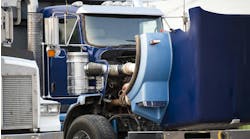When you think about the truck tire manufacturing process, the component most often thought of comes from small farms in Southeast Asia. Natural rubber is well known to everyone in the trucking business after supply issues caused the price to skyrocket from $1.48/lb. in July 2010 to a record high of $2.80/lb. in February 2011. This led to an unprecedented flurry of price increases as manufacturers attempted to offset rising raw material costs. With prices currently under $1/lb. and a projected global surplus for the next couple of years, it appears that the natural rubber crisis is officially in the past.
But a new butterfly is poised to flap its wings in Brazil and set off a tornado in Texas. Carbon black is a key raw material in tire manufacturing, and it accounts for about 30% of the physical weight, or about the same as natural rubber. It’s an important filler material that adds strength to the rubber, provides resistance to abrasion, and results in protection against ultraviolet light from the sun. While climate factors were largely responsible for the spike in raw material costs a few years ago, the EPA could play the villain if the industry experiences another round of price increases.
At the recent Clemson University Global Tire Industry Conference, Gregory King, vice president of sales and marketing for Sid Richardson Carbon & Energy Co., warned attendees about a potential shortage of carbon black for the U.S. starting in 2016. He based his projection on current expansion plans from the tire companies and demand estimates made by the Notch Consulting Group. But the real reason behind the domestic shortage will probably result from EPA efforts to control sulfur-oxide and nitrogen-oxide emissions from carbon black manufacturers. With increased production costs due to stricter emissions standards, the door will be wide open for China to expand into the North American carbon black market.
Even though I have limited knowledge of the carbon black production process, I have deduced that it is not environmentally friendly. Mr. King stated that wet scrubbers are necessary to control the sulfur-oxide emissions, and his company is unsure if it can get enough water in its West Texas plants. It is looking at other options, but the bottom line is that it will cost more to produce carbon black under the pending EPA guidelines.
And while the anticipated price advantages from offshore producers in China, India and Russia will put even more stress on domestic manufacturers, it’s important to note that the emissions problems here in the states are also present on other continents. The lax environmental restrictions overseas are not solving the global issues of sulfur-oxide emissions. China has already announced plans to remove up to 6 million cars that don’t meet emissions standards this year and another 5 million next year. The tide is definitely turning, but not fast enough.
Domestic tire companies have made incredible advances to lessen the impact of a not-so-environmentally-friendly manufacturing process. But the dependence on raw materials like natural rubber and carbon black creates a delicate balance that can lead to price spikes when one or more factors are out of whack. It’s another prime example of chaos theory, where the smallest change in the initial conditions can have a major impact on the entire system.
All we can do is keep our eye on the butterfly and hope the wings remain still.
Kevin Rohlwing can be reached at [email protected]


